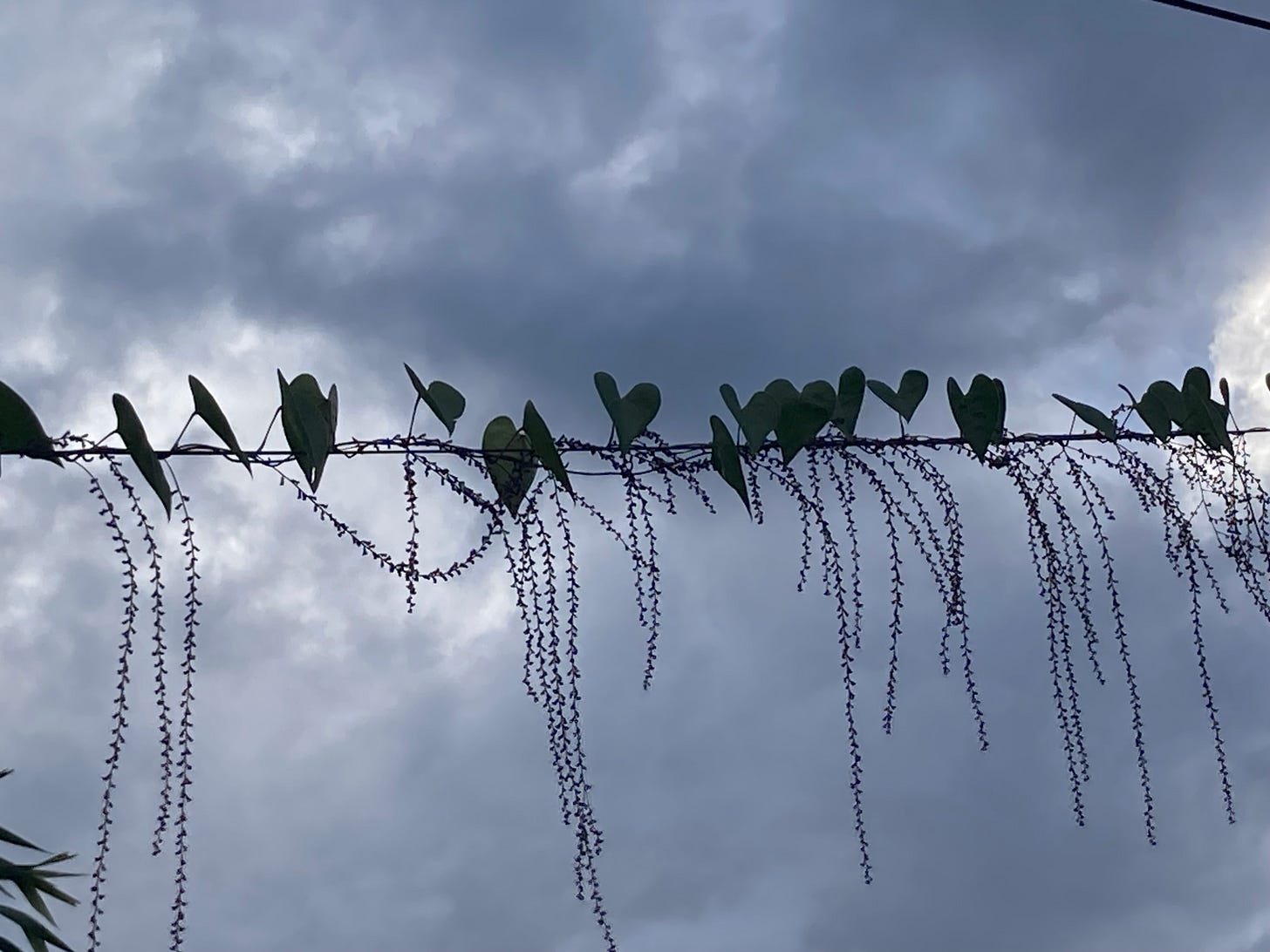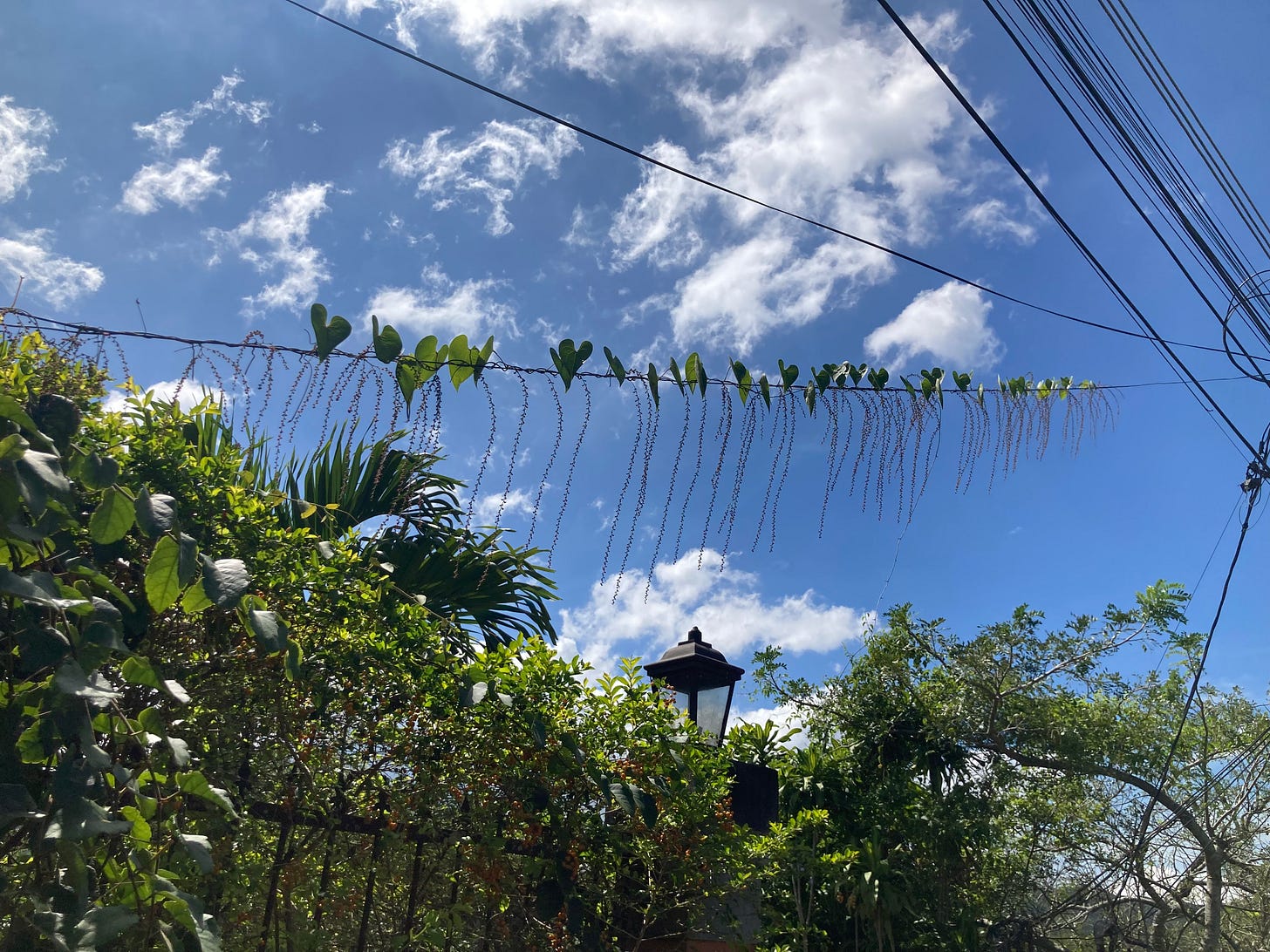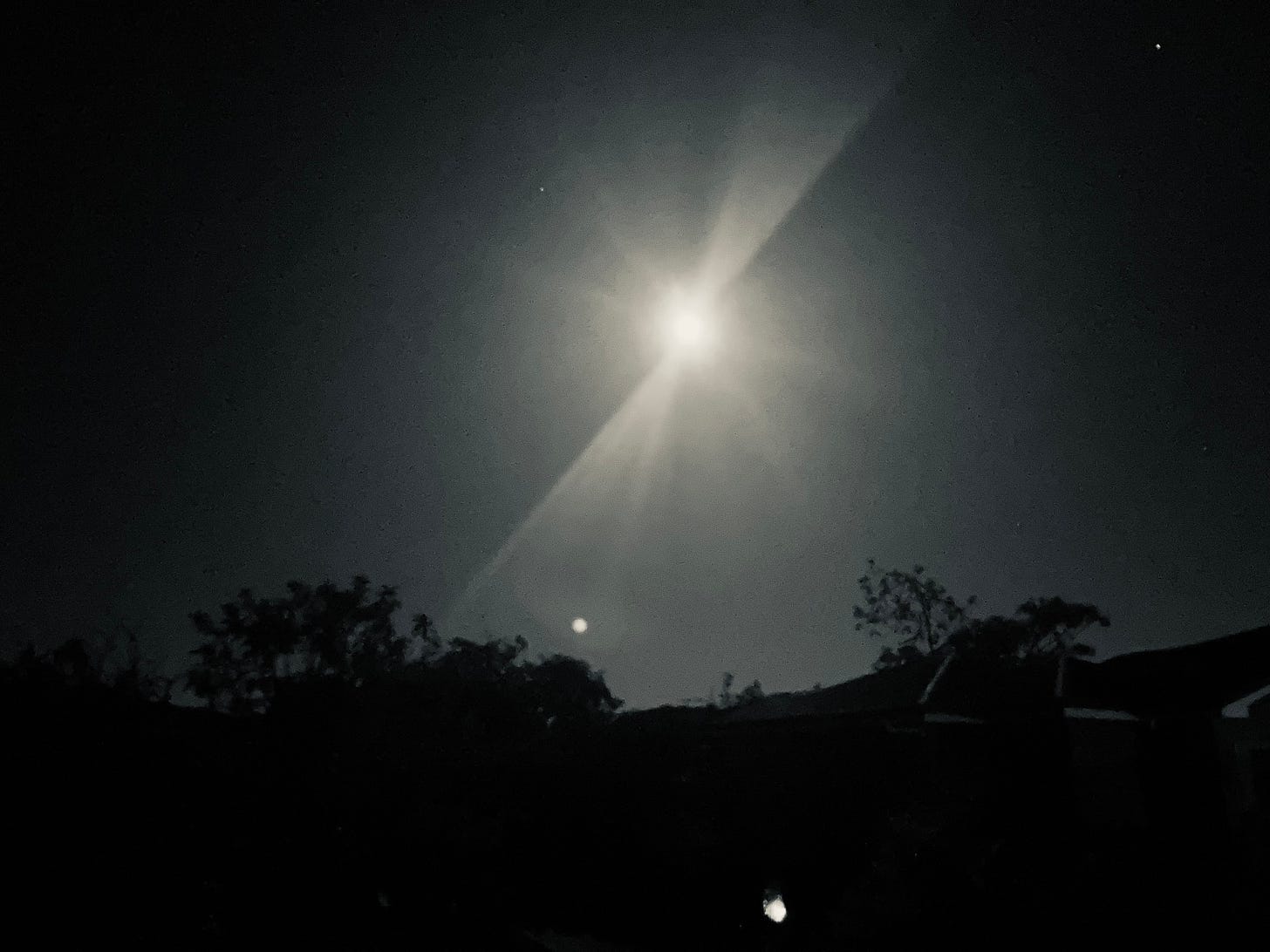Tranforming rejection into a work of art
On letting go of what isn't ours to make space for what is
Dear readers,
I recently received two rejections.
The past year and a half or so have been a series of green lights in my professional life, full of opportunities and acceptances, offers and invitations to teach, present, and publish, and share. It has been an incredibly abundant time, during which I have been encountering a lot of receptivity to the work I do in the world and what I offer. One of the gifts of midlife is having been around long enough to see with a longer view. I can now see these periods come in cycles, and that this cycle is impermanent, so I have been intentionally trying to make the most of it. Saying yes to the yesses, the invitations. But I had also just gotten used to always receiving a yes.
Then, I received two rejections - red lights, stop signs - both related to my creative work. According to the rejection letters I received, both were highly competitive and received hundreds of applications for a few spots. Neither rejection letter contained specific feedback on why it was rejected (beyond having received too many stellar applications), so there was nothing constructive for me to integrate in this regard besides the rejection itself. One was for publishing a story I wrote, which I will be sharing here instead (stay tuned for the story of the tree altar, coming soon). I sent it to a journal about humans and nature, which seemed to be a fitting home. It turned out it wasn’t, so the story will live elsewhere.
The other was for a writing residency on transformative education. It seemed like a perfect fit for me, but ultimately didn’t pan out. However, the organization extended the opportunity to publish an essay with them, which is ultimately a great opportunity and I will take them up on. It will be a chance to share my work with a different audience.
Both rejections came very close to each other (note to self: what was the astrology that week?). At the time, I was in the midst of the busiest peak of the semester and barely had time to register the rejections themselves. But after feeling the initial sting of the “no” - which absolutely did sting, as each piece was putting a piece of my heart out there - what I noticed right away was the sense that:
These weren’t for me.
I realized with both of them, I was trying to fit my story and my work into boxes to fit the applications. For the story, it had to be trimmed to meet the word count. For the residency, I tailored my application to fit the organization’s framing, which ultimately isn’t my own.
For the residency, I also put my book proposal on the backburner to work on the residency application, while, in the meantime, I could have just been working on the book or the book proposal itself. In hindsight, I got distracted by the idea of the residency and spent time trying to fit the book into the box when I could have otherwise been just writing what needs to be written.
I also realized I loved the idea of the residency as a validation of my work. That someone might see my proposal and say, “Yes, we want to give this person time and space to further develop these ideas.” A stamp of approval. Of course, when we are putting our work out into the world, there is some degree of a need for external validation. We hope our work resonates, we hope it makes positive waves. But there is also a need just to create for creativity’s sake, to create what your heart needs to create without seeking that validation, and when we create seeking this validation, it is ultimately not what could have been created without that seeking.
After the rejections, I also had to ask myself: what was I trying to achieve through these applications? And how might I achieve it otherwise?
After the rejections, I also had to ask myself: what was I trying to achieve through these applications? And how might I achieve it otherwise? With the tree altar story, it was to share this story with the wider world. There are other ways to achieve this, starting here. The story transpired over a few years, and I wrote it down over the summer. It was ready to be shared then, and will be shared here soon.
With the residency, my desire for a writing retreat is very strong - my soul yearns for a concentrated space for quiet and writing - but there are still other ways to make this happen that don’t require putting my work into a box that doesn’t quite fit, that might allow my work to unfurl in a way that it might not within the structure of the residency. I am a working parent who eeks out writing in small chunks while drinking coffee on weekend mornings while my child is watching a video (Enchantable is often brought to you by YouTube Kids :). I yearn to know what might emerge if I was given some time and space just dedicated to writing. However, I can make this happen. Not on my own, exactly - I absolutely need support to make it happen. I need time and space and someone to care for Daphne so I have have this time and space. But I can make it happen. I will.
There is a way that sometimes boxes and constraints can be helpful. A word count can help us be succinct and distill our ideas (something I am not always good at! I like to use a lot of words, as you already know :). Putting my ideas in another box could help them grow, in the way that a potted plant might provide space for a seedling to grow in protection and care.
But maybe these ideas are more like the vines I watch grow on my street, unruly and wild and growing on anything they can attach to. Growing in different directions. Not boxed in. Wildly spinning off where they feel drawn.
In the process of writing the applications, I was also holding back. I held back from sharing a story here because it wouldn’t be accepted for publication if it had been published elsewhere. I held back on the book proposal in order to write the residency application. Lately I haven’t been holding writing back, but the ratio of time I have to write has been small in comparison to the ideas that are springing forth. As the semester winds down, I am feeling the propensity of the creative urge to share everything, hold nothing back, to allow other things to emerge. Hence multiple posts in a week. It feels like a creative backlog, that I need to get moving in order for something else- I don’t know what yet- to come forth.
So, I return. In January when I received a dream about writing a book that helps people remember that the book they are reading is a tree, my hope was to have a proposal writen by the end of the year (I shared about this in this post from June). I think I can still make this happen. I intend to try, and to return to the ideas to see if they still feel alive.
I am sharing all of this with you in the spirit of sharing about “failure” and the creative process. I don’t know if these rejection letters can be considered failure, but they were definitely rejections. Red lights. Do not pass go, do not proceed in this direction. I think it is just as important to write about our failures as our successes. I am often telling my students that it is so important to learn to fail, to not be afraid of failure, to take the risk of putting ourselves out there, and to be willing to fail and learn.
In that sense, the rejections are informative.
Do not go in this direction.
But keep going.
When a vine hits a wall, it climbs up. Or goes through a crack. It changes direction, but it keeps going.
In my peace education classes, we talk a lot about unlearning. What do we need to unlearn in order to create a more peaceful, loving, caring world? Mostly, this relates to the ways we have internalized white supremacist, capitalist, patriarchal systems. And one such unlearning that is present for most students - myself included - is fear of failure.
Schooling teaches us to be afraid of failing. Through grades, we learn to be afraid to fail. Through formal schooling, we learn there is one right or correct or acceptable answer (sometimes this is true; other times it is not).
In September at the DRC Social Innovation Summit when I spoke on a panel about pedagogies for social innovation, this was one of my main points. Innovating demands that we fail. For every brilliant idea that succeeds, there are 99 others before it that failed. We need to learn not to give up. Perseverance. We need to learn to truly learn from our mistakes - or not even mistakes, what is not ours. We need to unlearn a fear of failure that many of us learned through schooling.
How can we compost our “failure” into something generative?
From emergent strategy: Never failure, always a lesson.
Recently I was playing a game with students that they organized (called the Flow game - highly recommend it!). As part of the game, you pose a question that you want to examine about your life. The question I posed related to what in my life I need to let go of and compost.
In our town in Costa Rica, there is this truck that drives around town with a loudspeaker and picks up large appliances that can’t be taken to the trash. Microwaves, refrigerators, things like that. It took me a long time to figure out what the truck was talking about, as the words coming out of the speaker sound indecipherable. But finally one day I understood that it was taking away junk that couldn’t otherwise be disposed of.
Couldn’t be composted, that’s for sure.
In my work, I use a lot of agricultural metaphors - planting seeds, cultivating community, harvesting, composting, growing. But not everything can be composted. Compost piles can’t take meat, for example. And different compost methods can compost different things.
And, there are different natural processes of transforming things.
“Maybe you need to ferment yourself,” one of my students said to me.
Fermentation requires sitting. Not moving. Sitting still. Allowing.
Composting also requires sitting, and also requires some tending of appropriate ratios, turning over.
What in your life needs to be composted?
What needs to be fermented?
And what can’t be composted or recycled, and needs to go on the loud truck to the dump?
How can we compost rejection and fear of failure into something generative, something new?
As I drafted this piece, it was the full moon in Gemini. After moon gazing and meditating, I went down to review my Many Moons planner (one of my favorite tools and guides for the year, and the 2024 planner is shipping right now. I can’t recommend it enough!). Synchronistically, after I had drafted this piece, I went to look at the planner’s full moon entry, and it was about reframing failure (the entry was written by Erica Feldmann of HausWitch).
Inspired by her entry, I printed the rejection letters, cut them up, and made them into a little piece of art. A heart.
When I make a request to the universe, such as planting seeds on a new moon, I often add, “This, or something better.”
As I cut up the paper, I repeated,
Something better.
I make space for what is mine.
I will find a home in the world for this work.
I move like a vine to seek what is mine.
In my post on little practices (are big practices), I wrote about how I keep love notes from others or positive feedback and encouragement I have received in a folder, something I can refer back to when I need it. I am putting the heart on my wall as a reminder that we can make art from our failures and rejections. We can give affirmation and validation to our own work. We can move like a vine and find what is ours, take the walls as indicators to shift and move directions. Maybe they will even take us somewhere we can’t even begin to imagine.
Here’s to finding what is ours, dear reader, to enjoying the process and journey, and to letting go of what isn’t ours to make space for what is.
With love,
Stephanie








